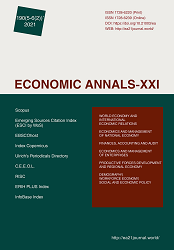Analysis of the Hungarian investment funds along economic cycles
Analysis of the Hungarian investment funds along economic cycles
Author(s): Emese Melinda Bogáth, Sándor Gáspár, Gergő Thalmeiner, Judit BárcziSubject(s): National Economy, Economic policy, Economic development, Financial Markets
Published by: Institute of Society Transformation
Keywords: Macro Finance; Investment Funds; COVID-19 Crisis; Economic Cycles; Hierarchical Cluster Analysis;
Summary/Abstract: As a result of the 2008 financial crisis, the international financial system underwent a fundamental change. The crisis has highlighted various weaknesses in the economic system. One of these weaknesses was the unregulated nature of investment markets and their inefficient structural structure. Funds managed by investment fund managers have also been hit hard by the crisis. In the post-crisis period of 2008, there was a dynamic economic boom, which also affected the types of investment funds and their changes. However, the economic crisis caused by the COVID-19 pandemic from 2020 onwards is a special crisis. Its unique nature is reflected in the fact that financial markets have remained stable under the influence of central banks. This, in turn, did not necessarily affect the investment market, and in particular investment funds, as expected in the event of a downturn. In our research, we illustrate the change of investment funds along economic cycles through the quantitative changes of Hungarian investment funds. In our analysis, we illustrate the evolution of fund changes through hierarchical cluster analyzes. In the course of our research, we found that Hungarian investment funds move in line with market and retail investment trends, and the structure of investment funds does not show a significant change during the sixteen years examined, regardless of changes in economic cycles.
Journal: Економічний часопис - ХХІ
- Issue Year: 190/2021
- Issue No: 5+6 (1)
- Page Range: 48-57
- Page Count: 10
- Language: English

